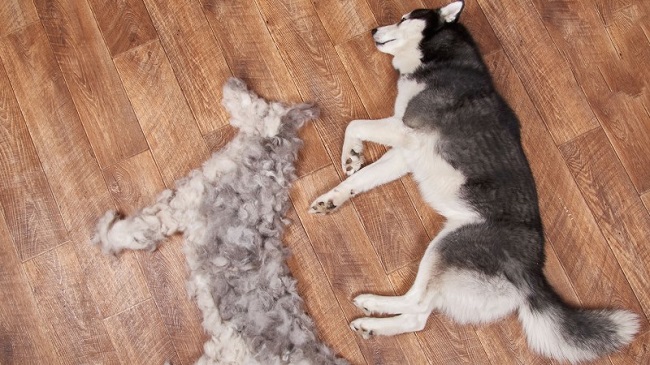
All mammals have some sort of hair covering some, much, or virtually all their bodies. The hair on some animals, particularly those traditionally trapped for their pelage, is known as fur, but it’s all the same no matter the name.
Hair is made of the protein keratin and dead epidermal or skin cells and it grows from follicles in the dermis or inner layer of the skin. Some hairs are densely packed into stiff, fibrous outgrowths that, depending on species and location on the body, become horns, fingernails, and toenails.
Human follicles each give rise to a single hair, but animals that depend on fur coats for temperature regulation often have several or many hairs per follicle. The diameter of individual hairs decreases as the number of hairs per follicle increases. Each follicle has an oil or sebaceous gland to keep skin and hair smooth and elastic. Dog breeds developed to work in water generally have a high oil content in their coat so that water runs off the guard hairs and does not penetrate to the skin.
Dogs have three types of hair: soft downy undercoat that is especially abundant in northern breeds but exists in most breeds that developed in cool or cold climates; stiffer and often longer guard hairs that form a protective layer to protect the undercoat and skin from harsh weather and cold water; and whiskers, those specialized hairs that grow in clumps on the face. Dog hair grows in cycles; when it reaches a certain length determined by the individual dog’s genetic make-up, it stops growing, then dies. That’s when shedding begins.
Your dog may be slightly uncomfortable during shedding as the dead hairs can cause her skin to itch. You can help relieve that slight discomfort by brushing her coat. Shedding seems to be connected to seasonal temperature, but it is governed by photoperiod or day length. Dogs that live outside usually shed heavily as days lengthen in spring, but those that live mostly indoors often seem to shed at least a bit all year.
Loss of the winter undercoat helps the dog stay cooler in warm, humid weather, a necessity for an animal whose only sweat glands are in the pads of his paws. Female dogs often drop their coats after a heat cycle or after whelping and most dogs will also shed after undergoing anesthesia. It is in winter that the dog’s coat does its job. Muscles in the skin allow a dog to fluff his coat up, thus trapping a layer of air warmed by his body temperature between the skin and the environment. Thus shielded, the dog can choose a spot out of the wind, curl up in a ball, tuck legs under his body, cover his nose with tail, and sleep outside in below zero temperatures. Hair also protects dogs from injury to feet, eyes, and ears. Northern breeds tend to have hairy paws to protect their pads from ice and snow. Some breeds have hair inside their ears or across their eyes to protect those tender parts from debris.
Whiskers are the stiff hairs on the dog’s face. They occur in clusters and serve as sensory structures anything brushing against these whiskers stimulates a dog to close his eyes, pull away, turn his head, paw his face, or shake his head. Some exhibitors trim the whiskers of their show dogs, but such trimming may limit the dog’s response to his environment and detracts from the natural appearance of the pet.
No matter what color a dog’s coat may be, the condition of his hair mirrors the general state of his health. Thyroid problems, insufficient dietary fats, poor nutrition, hormone imbalances, seborrhea, ringworm, pore infections, hot spots, inhalant allergies, and external parasites can directly or indirectly affect hair health and growth. Coat condition is, therefore, as important to monitor as appetite, behavior, and temperature when assessing a dog’s well-being. A dull, dry, brittle, or greasy coat is a clue to the internal workings of the canine system.
Background information was provided by Dog Owner’s Home Veterinary Handbook by Delbert Carlson DVM and James Giffin MD and Form and Function in the Animal Kingdom by Jill Bailey.
Related Articles & Free Email Newsletter Sign Up
10 Toxins To Keep Out of Your Dog’s Reach
Having A First Aid Kit for Your Pet is a Must


Comment here